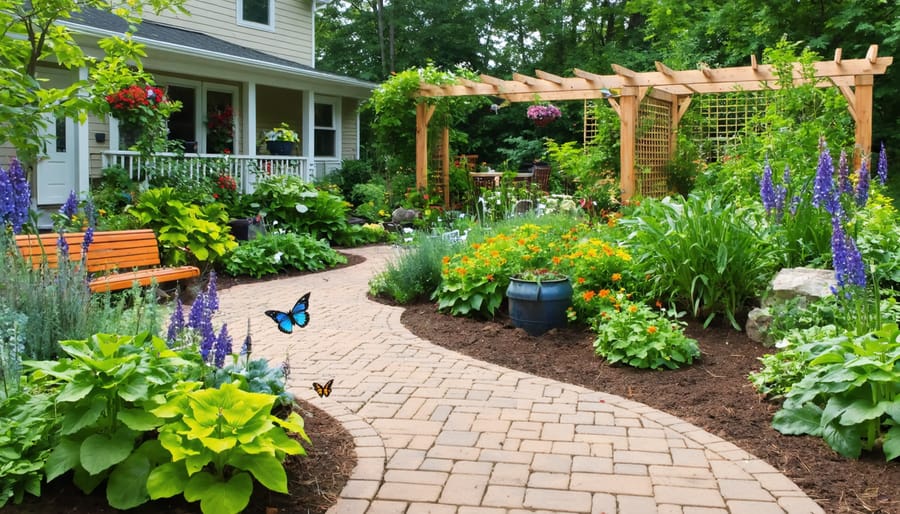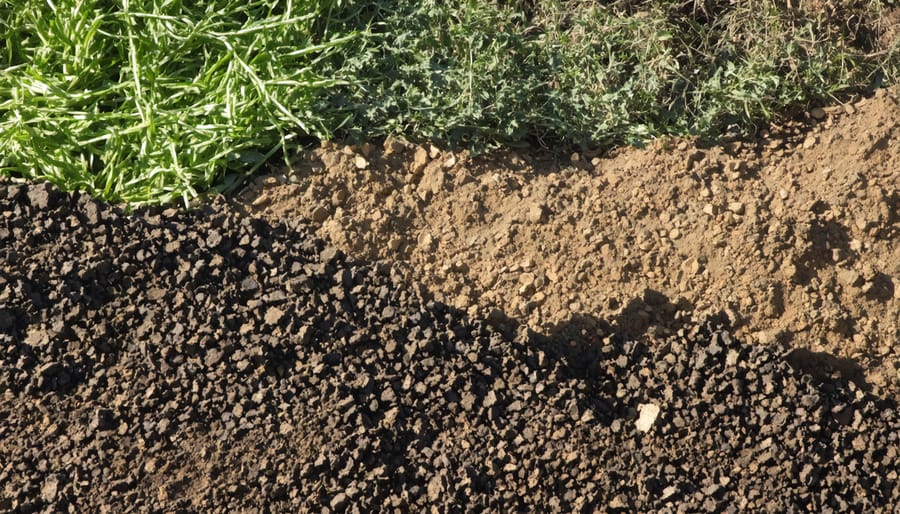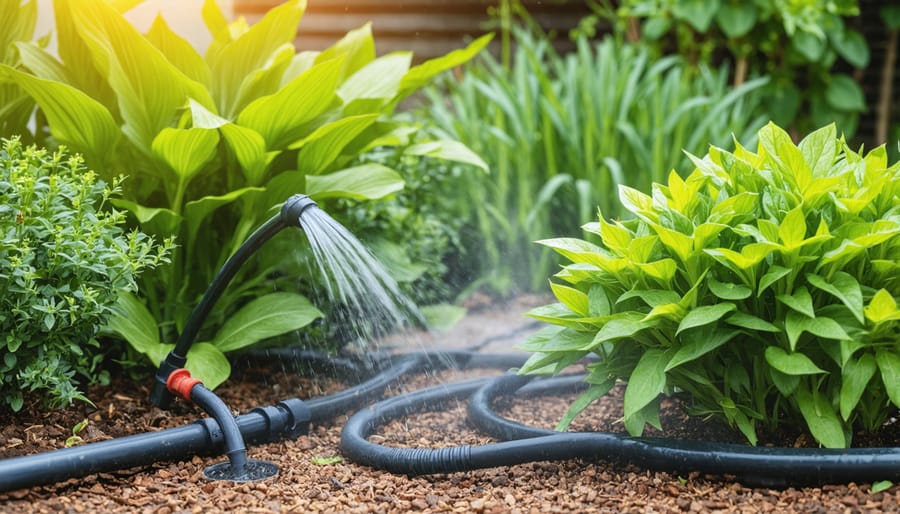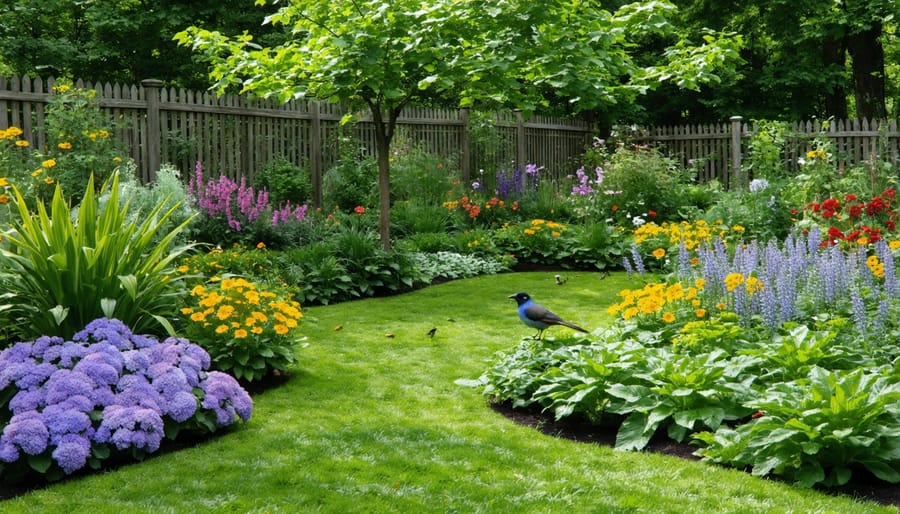Sustainable Agriculture: Transform Your Home Garden Into an Eco-Friendly Paradise

Transform your garden into a thriving ecosystem through year-round sustainable gardening practices that protect both your plants and our planet. Sustainable agriculture combines traditional wisdom with modern innovation, offering practical solutions for homeowners seeking to create environmentally responsible landscapes. By implementing smart water management, soil conservation, and natural pest control methods, you’ll reduce your environmental impact while maintaining a beautiful, productive garden. These seven time-tested practices help you work in harmony with nature, conserve precious resources, and create a resilient outdoor space that thrives through changing seasons. Whether you’re starting a vegetable garden or maintaining an established landscape, these methods ensure your garden contributes positively to the local ecosystem while providing abundant harvests and stunning natural beauty.
Soil Management and Conservation
Composting and Natural Fertilizers
Composting transforms kitchen scraps and yard waste into nutrient-rich soil, creating a sustainable cycle in your garden. Start by layering green materials (vegetable scraps, grass clippings) with brown materials (dry leaves, paper) in a 3:1 ratio. Keep your pile moist but not wet, and turn it regularly to speed up decomposition. Within 2-6 months, you’ll have dark, crumbly compost perfect for enriching your soil.
Natural fertilizers like bone meal, blood meal, and fish emulsion provide slow-release nutrients without harsh chemicals. Coffee grounds add nitrogen, while crushed eggshells deliver calcium. For a quick nutrient boost, brew compost tea by steeping finished compost in water for 24 hours. These organic alternatives not only feed your plants but also improve soil structure and promote beneficial microorganisms, creating a healthier garden ecosystem.

Mulching Techniques
Mulching is a game-changer for sustainable gardening, offering a natural way to protect your soil and plants. Layer organic materials like straw, wood chips, or leaves around your plants to create a protective blanket that locks in moisture and naturally suppresses weed growth. Apply mulch 2-3 inches thick, keeping it slightly away from plant stems to prevent rot. This simple technique not only reduces water usage by up to 30% but also enriches your soil as the mulch breaks down over time. For best results, refresh your mulch annually in spring or fall, and choose materials that complement your garden’s aesthetic. Many gardeners find that using leaves from their own yard or locally sourced wood chips creates a sustainable cycle while keeping maintenance costs low.
Water Conservation Strategies
Drip Irrigation Systems
Drip irrigation represents a game-changing approach to water conservation in sustainable agriculture. By delivering water directly to plant roots through a network of tubes and emitters, these systems minimize waste and maximize efficiency. You’ll typically see water savings of 30-50% compared to traditional sprinkler systems, making it a smart choice for eco-conscious gardeners.
Installing a drip system is surprisingly straightforward. Start with a main water line, then connect smaller distribution tubes that run along your plant rows. Add emitters at each plant location, and you’re good to go. The best part? Modern drip systems come with timers and moisture sensors, so you can “set it and forget it” while ensuring your plants get exactly what they need.
For best results, combine drip irrigation with mulching to retain moisture and protect the tubes from sun damage. Regular maintenance is minimal – just occasional cleaning of filters and checking for clogs will keep your system running smoothly year after year.

Rainwater Harvesting
Rainwater harvesting is a smart and sustainable way to reduce your garden’s reliance on municipal water supplies while cutting down on utility costs. By collecting rainwater from your roof and gutters, you can create a self-sufficient irrigation system that plants love. Start with a simple rain barrel system beneath your downspouts, or invest in larger storage tanks for more extensive gardens. Install filters to keep debris out, and consider adding a basic pump system for easier distribution.
Make the most of your harvested rainwater by combining it with drip irrigation systems or soaker hoses for efficient delivery directly to plant roots. This method not only conserves water but also helps prevent plant diseases by keeping foliage dry. During dry spells, your stored rainwater becomes a valuable resource, ensuring your garden stays lush without straining local water supplies. For optimal results, calculate your garden’s water needs and storage capacity before setting up your system.
Native Plant Selection
Native plants are the cornerstone of sustainable landscape design, offering numerous benefits that make them an excellent choice for eco-conscious gardeners. These locally adapted species have evolved alongside regional wildlife, creating natural habitats that support pollinators, birds, and beneficial insects. Unlike exotic plants, native species typically require less water, fertilizer, and maintenance because they’re already adapted to local soil conditions and climate patterns.
By choosing native plants, you’ll significantly reduce the need for chemical pesticides since these plants have developed natural defenses against local pests. They’re also more resilient during extreme weather conditions, whether it’s drought, heavy rain, or temperature fluctuations. This adaptability means less time and resources spent on plant replacement and maintenance.
Consider incorporating native grasses, wildflowers, and shrubs that are common to your area. Local nurseries and extension offices can help identify suitable species for your specific region. These plants not only create a beautiful, natural aesthetic but also help preserve local biodiversity and maintain the ecological balance of your area.
Remember that native plants support local food webs and provide essential resources for wildlife throughout the seasons, making them an invaluable component of sustainable agriculture practices.
Integrated Pest Management
Integrated Pest Management (IPM) represents a natural, eco-friendly approach to controlling garden pests without relying on harmful chemical pesticides. This strategy focuses on prevention first, using companion planting techniques where certain plants naturally repel specific insects. For example, marigolds help protect tomatoes from nematodes, while basil keeps mosquitoes and flies at bay.
Regular monitoring of your garden helps identify potential pest issues before they become serious problems. By understanding the life cycles of common pests, you can time your interventions more effectively. Beneficial insects like ladybugs, praying mantises, and parasitic wasps become your allies in controlling harmful pests naturally.
Physical barriers such as row covers, netting, and copper tape provide effective protection without chemical intervention. Maintaining healthy soil and proper plant spacing also increases plant resilience against pests. When intervention is necessary, start with the least toxic options first, such as handpicking pests or using insecticidal soaps.
This holistic approach not only protects your garden but also preserves beneficial insects and soil microorganisms essential for a thriving ecosystem. Plus, you’ll enjoy chemical-free produce and flowers while contributing to environmental sustainability.
Biodiversity Promotion
Creating a garden that supports biodiversity is like rolling out a welcome mat for nature’s helpers. Start by planting a diverse mix of native flowers, herbs, and shrubs that bloom throughout different seasons. These plants provide food and shelter for beneficial insects like bees, butterflies, and ladybugs, which help with pollination and natural pest control.
Consider creating “wildlife corridors” by connecting different planted areas, allowing creatures to move safely through your garden. Add features like bird baths, small ponds, or insect hotels to provide essential habitats. Leave some areas slightly wild with fallen leaves and twigs, which create perfect homes for beneficial insects and small animals.
Layer your plantings vertically, mixing tall trees with medium shrubs and ground covers. This creates multiple habitats within the same space. Avoid using chemical pesticides, as these can harm beneficial insects and disrupt the natural balance. Instead, encourage natural predators like birds and beneficial insects to keep pest populations in check.
Remember, a biodiverse garden isn’t just good for wildlife – it’s more resilient and requires less maintenance over time.

Energy-Efficient Landscaping
Strategic plant placement can transform your landscape into an energy-efficient outdoor space that naturally regulates temperature and reduces energy costs. Plant deciduous trees on the southern and western sides of your property to provide cooling shade during summer while allowing warming sunlight through in winter. Evergreen trees and shrubs positioned as windbreaks along the northern and northwestern edges help block cold winter winds, reducing heating needs.
Consider vertical gardening elements like climbing vines on trellises to shade walls and windows, naturally cooling your home during hot months. Ground covers and low-growing plants around your property help reduce heat reflection and maintain soil moisture, decreasing the need for artificial cooling and irrigation.
For maximum efficiency, position larger plants and structures to create microclimates that protect more delicate vegetation and reduce water evaporation. This thoughtful arrangement not only conserves energy but also creates a harmonious, sustainable landscape that enhances your property’s natural beauty while reducing environmental impact.
By implementing these seven sustainable agriculture practices, you’re not just creating a more environmentally friendly garden – you’re contributing to a healthier planet while saving money and resources. These methods work together to create a robust, self-sustaining ecosystem that requires less maintenance over time. Start small by choosing one or two practices that feel most manageable, such as composting or water-efficient irrigation. As you become more comfortable, gradually incorporate additional techniques. Remember, every sustainable choice makes a difference, whether you’re tending a small backyard garden or managing a larger property. The beauty of sustainable agriculture lies in its simplicity and adaptability – anyone can participate in creating a more sustainable future, one garden at a time.

